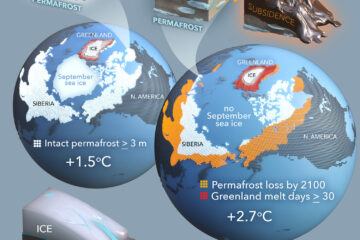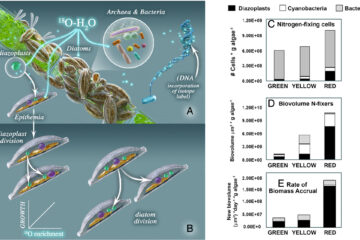Stream carbon and nitrogen supplements during leaf litter decomposition: contrasting patterns for two foundation species
Leaf litter decomposition plays a major role in nutrient dynamics in forested streams. The chemical composition of litter affects its processing by microorganisms, which obtain nutrients from litter and from the water column. The balance of these fluxes is not well known, because they occur simultaneously and thus are difficult to quantify separately. Here, we examined C and N flow from streamwater and leaf litter to microbial biofilms during decomposition. We used isotopically enriched leaves (13C and 15N) from two riparian foundation tree species: fast-decomposing Populus fremontii and slow-decomposing Populus angustifolia, which differed in their concentration of recalcitrant compounds. We adapted the isotope pool dilution method to estimate gross elemental fluxes into litter microbes. Three key findings emerged: litter type strongly affected biomass and stoichiometry of microbial assemblages growing on litter; the proportion of C and N in microorganisms derived from the streamwater, as opposed to the litter, did not differ between litter types, but increased throughout decomposition; gross immobilization of N from the streamwater was higher for P. fremontii compared to P. angustifolia, probably as a consequence of the higher microbial biomass on P. fremontii. In contrast, gross immobilization of C from the streamwater was higher for P. angustifolia, suggesting that dissolved organic C in streamwater was used as an additional energy source by microbial assemblages growing on slow-decomposing litter. These results indicate that biofilms on decomposing litter have specific element requirements driven by litter characteristics, which might have implications for whole-stream nutrient retention.


